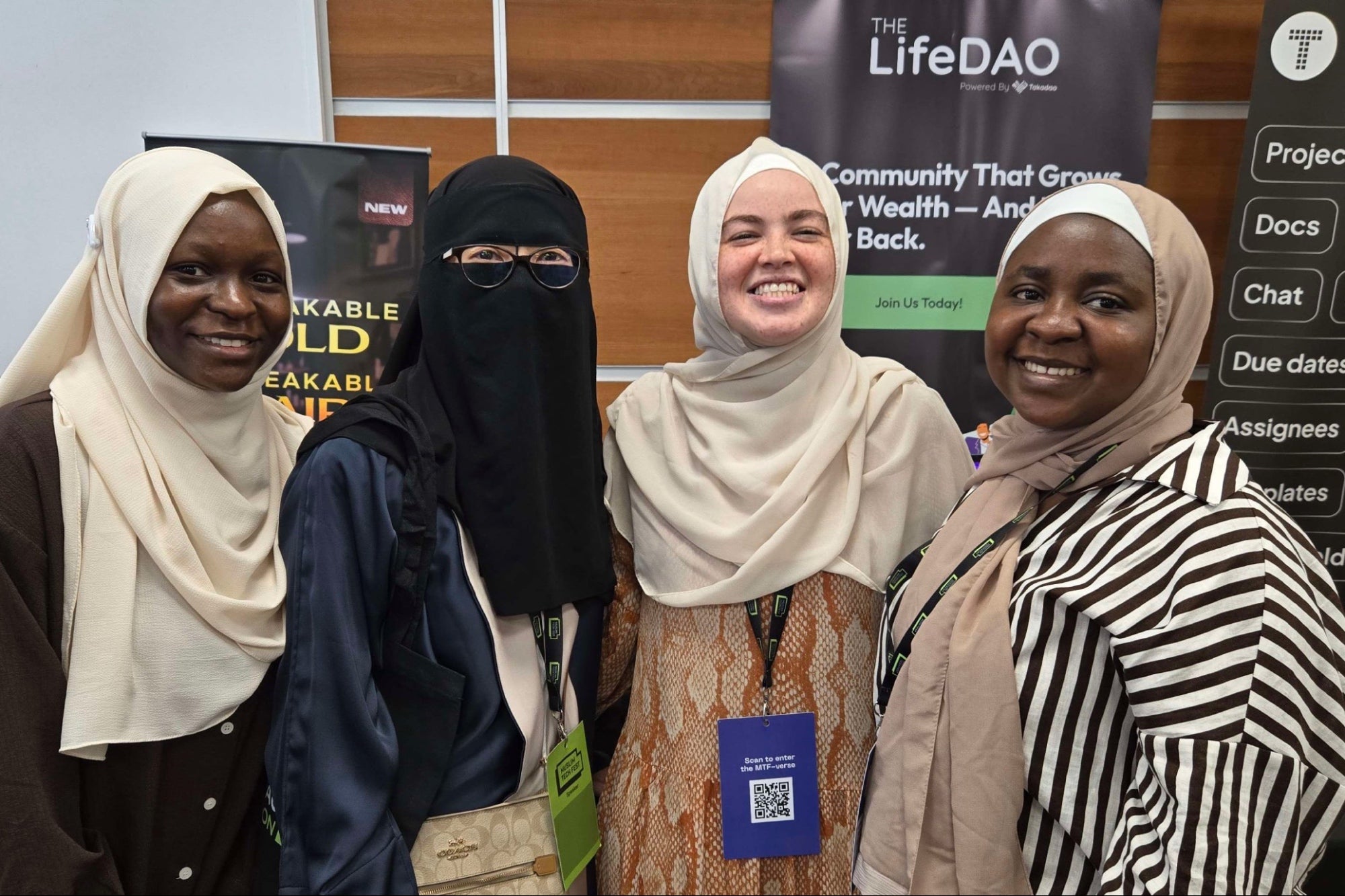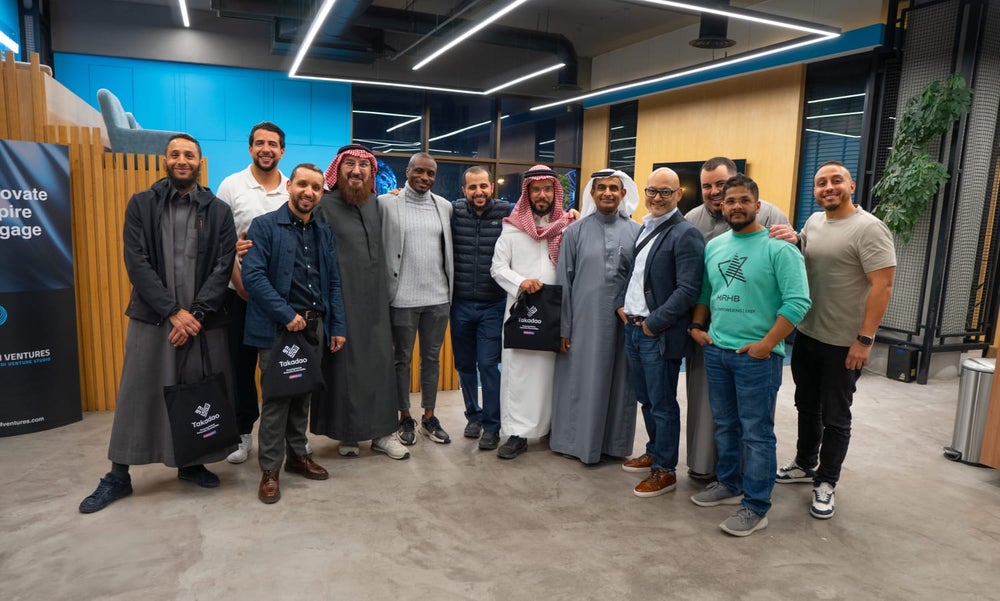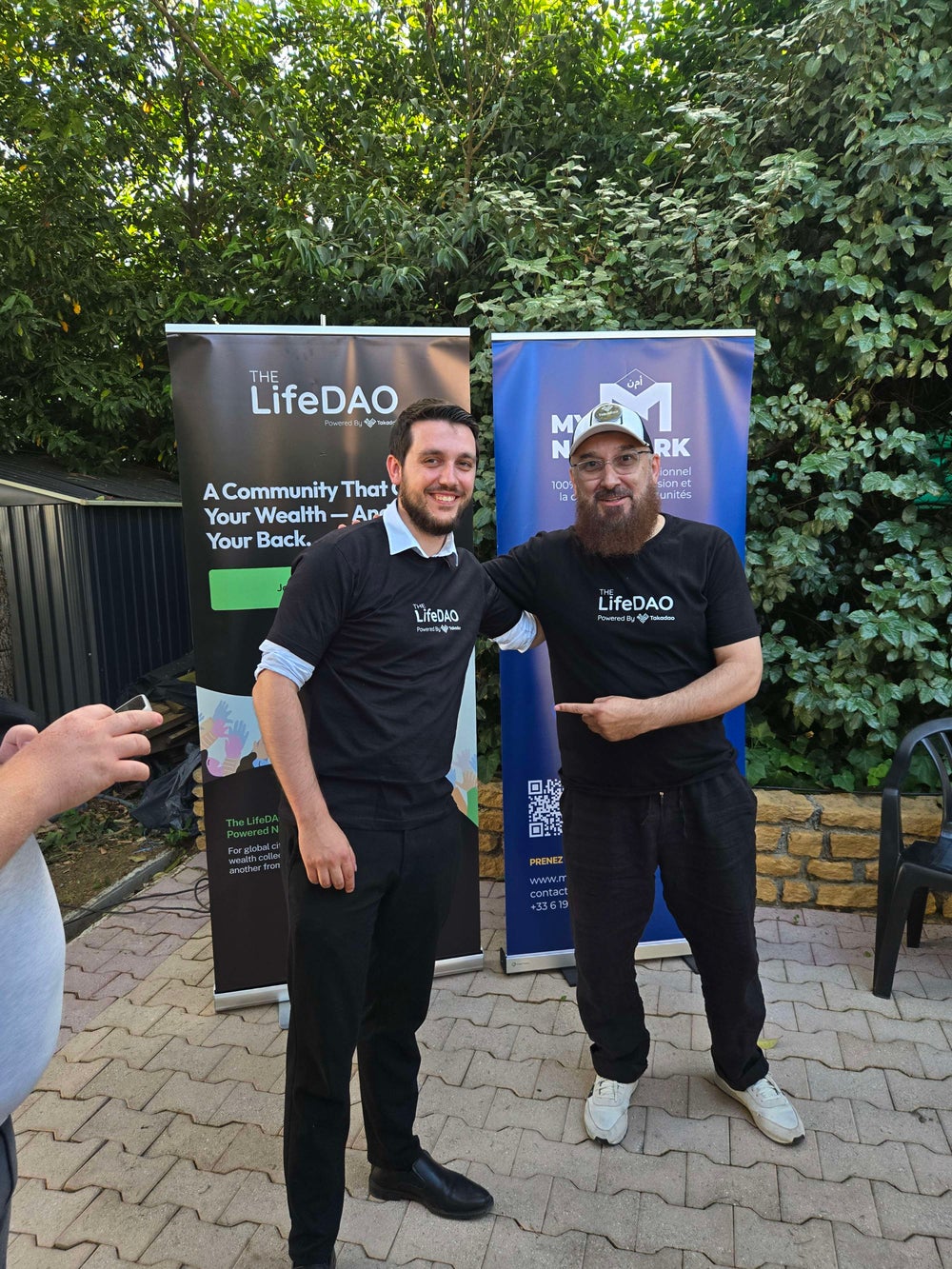Building in Web3: Lessons, Strategies, and Startup Insights What follows is our story from inception to launch, building a Web3 startup while navigating fundraising, product development and community growth.
By Sharene Lee
Opinions expressed by BIZ Experiences contributors are their own.
You're reading BIZ Experiences Middle East, an international franchise of BIZ Experiences Media.

This past July 2025, Takadao launched The LifeDAO's Life Protection Benefit, an alternative to the casino model of life insurance that is dominant today. It took three years of meandering and missteps. My Web2 friends are snickering, "How can it take this long to launch a product with all the tools (aka AI) that we have today?" Well, let me tell you how.
When you build something truly innovative, there is no well-trodden path. Like building ecommerce in the 2000s without credit card payment processors and logistics companies, building on Web3 is building without infrastructure, everything needs to be done from scratch, or "hacked". What follows is our story from inception to launch, building a Web3 startup while navigating fundraising, product development and community growth.
As we were working on our flagship Life Protection Benefit, we launched a number of pre-products to get the ball rolling. Traditional insurance is a complex financial product and it took time for us to truly understand and structure our anti-insurance product. While the product team was cooking, our tech and growth teams needed to learn and build. So we built and launched Takaturn, a rotating group savings program; House of Wisdao, an NFT-based community, and created content with Takatalks, a podcast at the intersection of Web3 and Islamic finance; as well as Takalearn, structured educational content. Some might think this a lack of focus, but I'm thankful we went down these paths, because we made all the mistakes that we needed to, to get to where we are today. Beyond the learning, launching all these sub-products had a very strategic goal, to show progress in order to fundraise.

Source: The LifeDAO
Fundraising
Fundraising in Web3 is not like fundraising in Web2. Despite being experienced Web2 founders who founded, raised millions and exited our previous startup, we quickly realized that we didn't understand the rules. For starters, due to the lack of regulatory clarity in Saudi Arabia, the most important regional VCs did not, and many still do not, have a mandate to invest in Web3 startups. No mandate also means no expertise and we found that it was typically the most junior analyst, the youngest person on the team, who was tasked to talk to us. While many of these analysts were bright and excited about the space, they couldn't get their senior partners and LPs to listen, so fundraising with regional VCs was futile. This, despite us being a well-known team who had a number of major VCs on our cap table from our previous startup.
We started the company in the summer of 2022, around the time of the Terra Luna algorithmic stablecoin collapse; from US$50 billion market cap to zero in 3 days. In November 2022, I attended a private event for LPs hosted by a VC we have a very good relationship with. It was a day after the implosion of FTX, a centralized crypto exchange that experienced a "run on the bank". Billions in customer funds went "missing". I was at the event to connect with one of the VC partners that was bullish on crypto; turns out he was well exposed to the FTX collapse and was devastated. There was no point in pitching him, all I ended up doing was to express my condolences. In Web3, a few large collapses have an outsized impact on market conditions. After Terra Luna and FTX, the naysayers and nevercoiners held the mic and like every "crypto winter" or bear market before this, they were predicting the collapse of the Web3 industry. Fortunately, Web3 is not an industry, it's a social movement and those don't die. However, investors are trend seeking, and Web3 was no longer trendy.
2022 kicked off the post-COVID crypto winter. In Web2, market downturns result in liquidity crunches and create negative conditions for fundraising. Some of this happens in Web3 as well, but liquidity cycles are much shorter and savvy Web3 investors know to time the market. Liquidity cycles are shorter because projects tend to have a Token Generation Event (TGE), the Web3 version of an IPO, very early in their life cycle. During a TGE, companies release their tokens for the first time, for sale to the retail investor. Many projects launch their token prior to even having a product, the rationale being that the token is necessary for the product to exist.The token sale brings retail investors into the game and the team and early investors often cash out at this stage. Imagine raising tens to hundreds of millions of dollars with an IPO prior to or just shortly after launching your product, that's how things were being done in Web3. And everyone wanted the token launch to happen during the "crypto summer", aka a bull market, when token prices would skyrocket seemingly without reason. Naturally, the best time to invest is the during a bear market, when valuations are low and projects have time to build enough hype prior to the next crypto summer.
Unfortunately, we didn't benefit from the bear market of '22 as we had no natural networks in the Web3 space when we launched. Crypto VCs understand one thing, and that's hype. The entire run up to the TGE is a carefully orchestrated and well-practiced exercise to generate hype and the key to generating hype is the founder or team. Crypto investors know that their ecosystem needs a certain type of founder, the type who understands the game and is willing to play it. The game requires founders to raise at billion-dollar valuations prior to having product-market fit, or even a product at all; then watch their token value plunge once the hype is over and still be willing to build through the vitriol and anger of the retail investors who piled in; all in the hopes that their product will be ready for the next bull market and get actual usage and revenue. It's not a scam, it's just an extremely risky strategy. Many founders give up once the going gets tough, especially since they already bagged millions from their token sale.
We didn't go the pre-product token sale route and instead decided to build a real product and a real community before our TGE. And we could do so because we got lucky. In February 2023, legendary third generation VC, Tim Draper, investor in Hotmail, Skype, Baidu, Tesla, and Coinbase, rolled into Riyadh, heard our pitch and funded us. Tim was inspired by the audacity of taking on the insurance industry, largest in the world by revenue, and the use of the blockchain as our weapon of choice. Sagely, Tim advises his startups to keep a few months of payroll in Bitcoin, which we did and our crypto investments have extended our runway far beyond what should have been. With the backing of a well-respected VC and multiple pre-product launches, we had the wind at our backs and were able to raise more money with other international VCs who straddle Web2 and Web3.
 Source: The LifeDAO
Source: The LifeDAO
Product Development
Fundraising is not success; fundraising is just a means to an end. The real work was just beginning. While the efforts spent on launching pre-products and the various initiatives toward growing our community gave us something to talk about with investors and helped up fast track the learning process, they were sapping our resources and causing us to lose focus on what was important, launching The LifeDAO and the flagship Life Protection Benefit.
Takadao started as a blockchain-based protocol for self-insuring communities and the focus hasn't changed. Takadao's technology enables communities to build and own insurance funds that are managed by smart contracts. This creates non-profit, community-owned insurance pools that are global, inclusive and transparent; and that benefit members instead of profit-seeking shareholders. The LifeDAO is an association of members working together to protect and grow their wealth. The Life Protection Benefit is the first protection reserve where a payout is made to families in the event of a member's passing. This is powered by Takadao technology.
Once it became clear what our target was, we shut down all of our pre-products to focus on The LifeDAO ecosystem. By then, we already understood the achilles heel of the Web3 ecosystem: poor user experience. Short of the expectation of receiving large sums of money, nothing can motivate the Web2 user to navigate wallets, private keys, gas fees and potential hacks. Payments, the foundation of the internet, continues to be extremely tricky in Web3. Most people are blocked at the step of figuring how to convert their fiat into crypto. Even in countries where crypto exchanges and credit card on-ramps are plentiful, "Know Your Customer" (KYC) requirements still frequently trip people up. The solution, we discovered, is not to on-ramp to crypto at all and simply collect fiat or cash payments for a service. Solving this payments problem was a huge game changer for us and this was reflected in our numbers immediately.
The other key issue in Web3 is security and the risk of smart contract hacks and phishing. Because money is stored on-chain, a hack can result in the siphoning of funds or complete emptying of wallets. This isn't as large a risk for Web2 companies as funds are usually locked up in a bank ledger somewhere; it's not even real money in the banks, just a number on a balance sheet, which makes it much harder to steal. In our pre-products, we've experienced front-running where funds were siphoned as well as the loss of private keys which resulted in an unsecured function being called that resulted in a minor smart contract being emptied. In total, very small amounts were lost, but these were huge wake-up calls for us. It forced us to look at everything, not just code, but human processes and to create multiple redundancies to protect ourselves. We have a full time security analyst on staff and regular training for the team as the greatest risk is usually the person behind the screen.
Also, as we have matured in the industry and have some incredible partners, including Chainlink and Arbitrum Foundation, heavyweights in the Web3 industry, we now have a network to tap into for help with security. In fact, Arbitrum Foundation provided us with a 6-figure grant for smart contract audits with Hacken, a top-three smart contract auditing firm. It helps to have networks in Web3. Beyond the hype machine, the technology and possible exploits changes so fast that it's hard to keep up with everything and that's where having friends helps. The security team at Chainlink labs has been a phenomenal resource.
Growth and Community
Web3 lives and dies by community. Web3 is a social movement, not an industry; it thrives because there are people who believe in its values and mission. The very idea of the blockchain requires participation from a community to work. This is the reason why we decided to build Takadao on blockchain rails. Community-owned mutual protection funds need technology built for community. So from day one, we worked hard to cultivate and grow our community because we understood that the community is the true force of our business.
But community building is hard, where to start? We started off by clearly defining and communicating our vision. A vision of a world where finance empowers communities rather than excludes. Our mission is to create tools for community-owned financial systems instead of tools to make the rich richer. As a Shariah-compliant company, there was a temptation to use the "halal" label as a value proposition, but we quickly recognized that doing so would imply an inferior product whose only value proposition is shariah-compliance. We are Muslims and proud to be; but what we are building is a superior product for humanity, it's not only for Muslims and shariah-compliance is simply a condition of building a superior product.
A community is built on shared values and our values revolve around financial freedom without centralized control, fairness and transparency, and collective efforts to prioritize the well-being of the community while uplifting the well-being of the individual. These are values that are shared by Muslims, even if they are not specifically Islamic values. So our messaging is well-received by the 2.4 billion strong Muslim population, a population with double the growth rate than other groups.
But believing and following does not equal conversion. Conversion is when money exchanges hands. Prior to launch, we wanted to make sure that our growth efforts would convert, so we kicked off a pre-launch phase where we encouraged our community to become members of The LifeDAO prior to the Life Protection Benefit launch. Pre-joined members would receive a discount for taking an early risk.
As it turns out, people hate insurance. Without comparing ourselves to insurance, it was very difficult to explain what we did in the 8.25 seconds that it takes for people to lose interest. But by comparing ourselves to insurance, even if we are indeed the anti-insurance, it immediately placed us in a negative light and discouraged people from joining. Such is the anger that people have for the insurance industry. So we had to invent a new way to explain what we are doing without relying on existing commercial references.
We decided to focus on the heart of the product, the community. The LifeDAO is not insurance, the Life Protection Benefit is not insurance. The LifeDAO is a community of like-minded people who value financial freedom and promise to help one another when life gets tough. We designed an onboarding process that incorporates "wow" moments all tied to community and people started joining, all this before we even officially launched the product.

Source: The LifeDAO
Launch
At launch, we already had 2,800+ prepaid memberships, 400 KYC-ed and active members and over half a million dollars across reserves and investment funds contributed by members. Our strongest growth channel is referrals and word of mouth.
Today, we are so excited to say that we've finally launched the Life Protection Benefit and that our community is protecting one another. We are only getting started. Next on the roadmap is a prepaid crypto VISA card coupled with non-custodial collective investment pools. We're working on our next anti-insurance product, a form of burial and end of life insurance, with global health protection up next. It took us a while to get here, but we're on a roll now.












